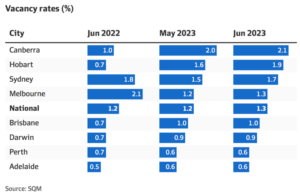Navigating the Latest Land Tax Amendments in NSW: Changes to Principal Place of Residence Exemption
Introduction:
On 24 January 2024, Revenue NSW unveiled new amendments to the land tax regulations, specifically impacting the Principal Place of Residence (PPR) Exemption. This change could significantly influence your future land tax assessments, particularly if you are considering property purchase in New South Wales.
The recent announcement from Revenue NSW highlights adjustments to Schedule 1A of the Land Tax Management Act 1956. As per the amendments, the PPR exemption will now apply exclusively to individuals holding at least a 25% interest in the property, whether owned solely or combined.
Principal Place of Residence Exemption:
Land tax is an annual obligation on all non-exempt land as of December 31 each year. If you own the land on December 31, 2023, it may make you liable for land tax in 2024, exemptions are available. One notable exemption allows property owners to claim relief for land used and occupied as their principal place of residence, limited to one property per family.
Land Tax Assessment:
Calculation of land tax involves the total value of all taxable land exceeding the annual threshold, not on each specific property. If the combined value remains below the threshold, no land tax is due. The 2024 threshold is $1,075,000, subject to yearly variations. Changes to land ownership in the current year impact the subsequent year’s tax, assessable using Revenue NSW’s land tax calculator.
Impact of the New Policy:
Post-amendment, the principal place of residence exemption will no longer apply to those holding less than a 25% interest in the property. Individuals with less than 25% interest, purchasing property on or after 1 February 2024, will be liable for land tax from the 2025 tax year.
Illustrative Example:
Andy and Bella acquired a property with a land value of $2,000,000 on 02/02/2024, designating it as their primary residence. Andy possesses a 20% stake in the property, while Bella holds the remaining 80%. Additionally, Andy is the sole owner of a holiday home with a land value at $1,000,000. In the 2024 land tax assessment, Andy qualifies for an exemption for his principal residence, and the combined land value of $1,000,000 does not exceed the land tax threshold, resulting in no land tax obligation for Andy this year.
However, looking ahead to 2025, without any transfer to the distribution of shares in their principal residence, Andy will lose eligibility for the principal place of residence exemption. The total property ownership amount for Andy in 2025 will be $1,400,000 (land value), potentially exceeding the threshold and making Andy liable for land tax.
Given this scenario, Andy can regain eligibility for exemptions if Bella transfers her shares, allowing Andy to hold more than 25%. Consequently, Andy’s property value will remain below the land tax threshold, eliminating the need for him to pay land tax in 2025. Transferring shares to meet the 25% threshold can reinstate the exemption.
Proactive Measures: To shield yourself from the implications of these recent amendments, timely transfer of property ownership shares is recommended. For a comprehensive consultation, reach out to us at +61 2 8355 3737. We’re here to help you through the complexities of the new land tax regulations in NSW.




